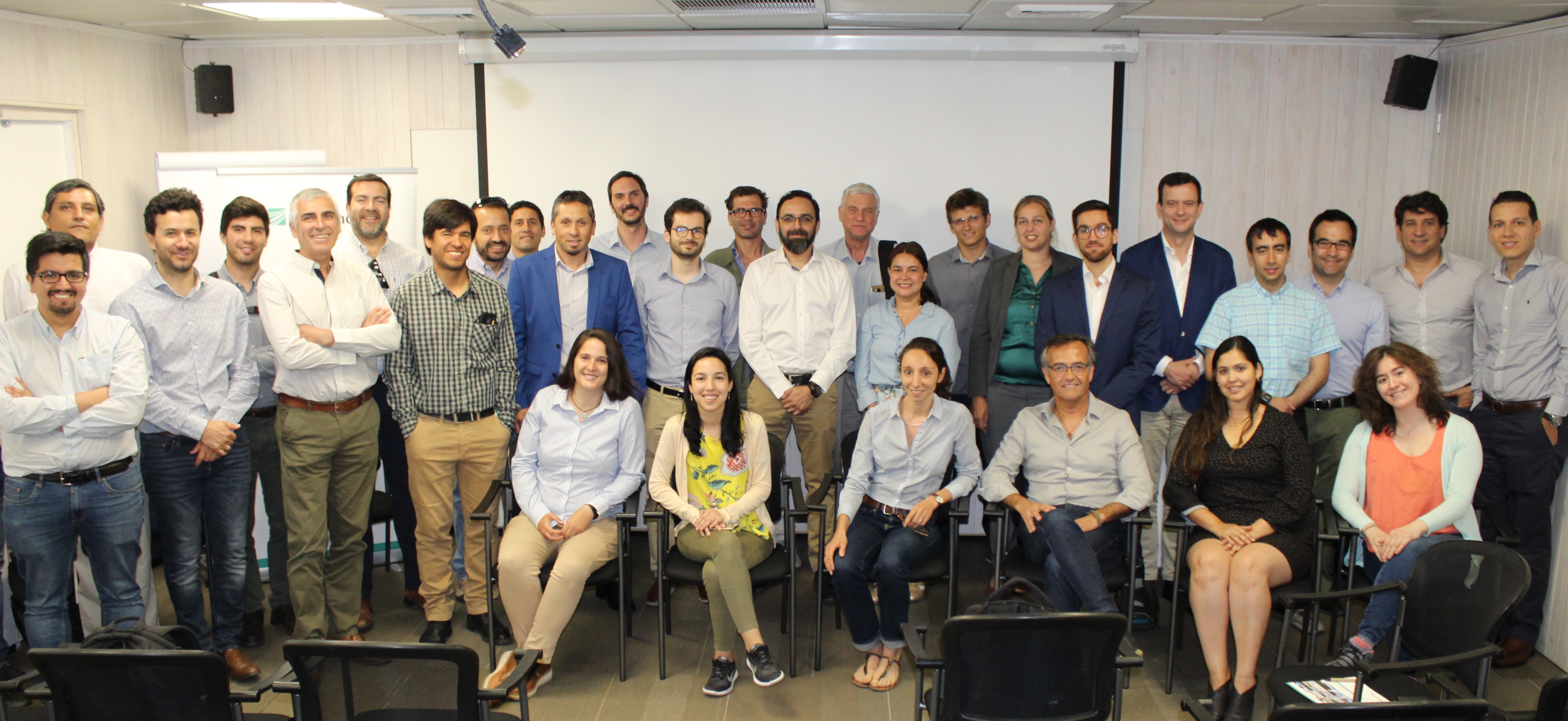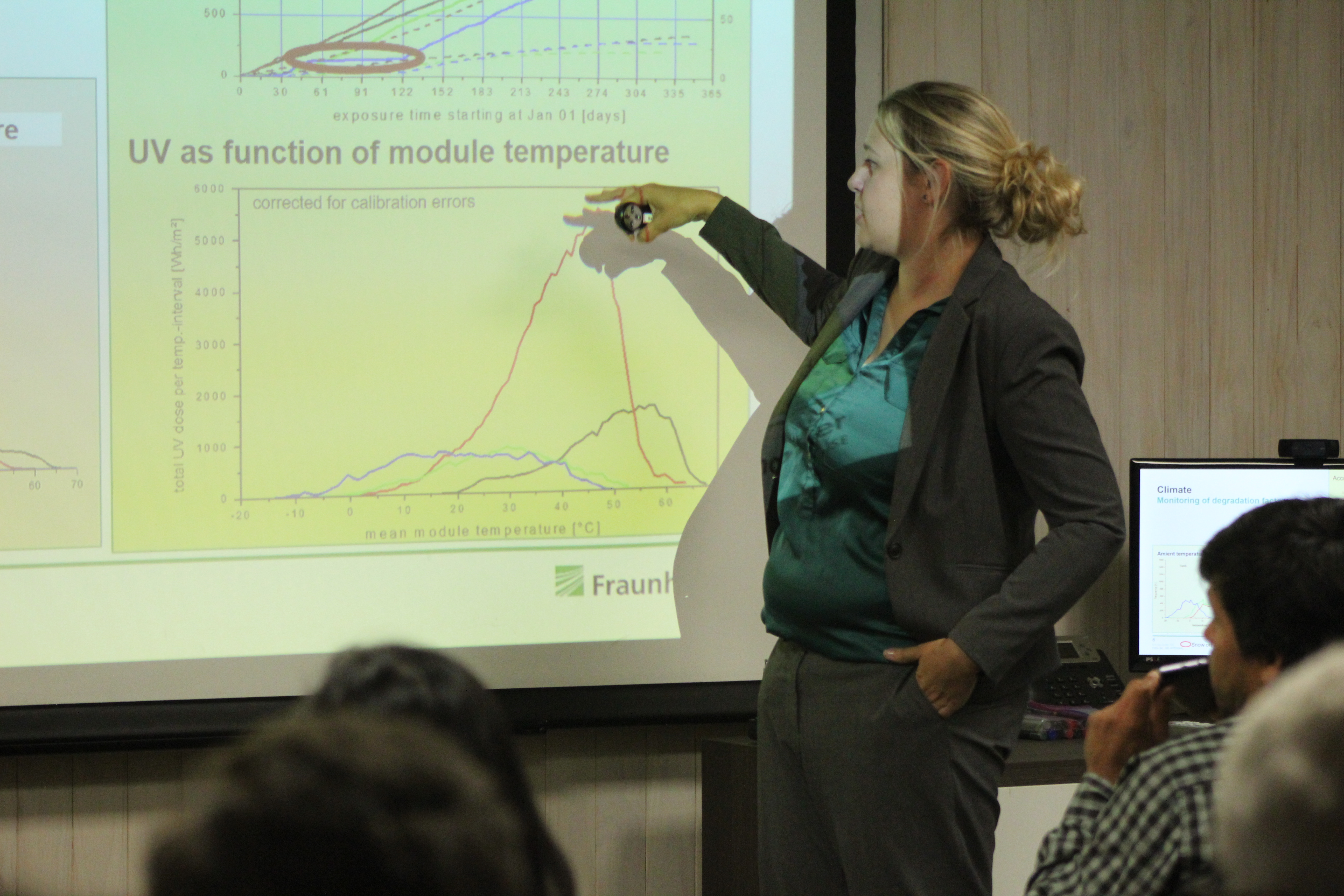Bifacial photovoltaic technologies: efficiency, low cost and better use of solar radiation
• In an international workshop organized by the Fraunhofer Chile Center of Solar Energy Technologies, experts from Fraunhofer ISE and ATAMOTEC showed the opportunities and challenges that bifacial photovoltaic technologies present for Chile.
Demonstrating that bifacial photovoltaic technologies allow for the maximum use of solar radiation per available square meter, with unbeatable cost and efficiency projections for the industry, the International Workshop "Opportunities and Challenges of Bifacial Photovoltaic Technologies in Chile" was held this Friday, November 15, a scientific and business event organized by the Fraunhofer Chile Solar Energy Technology Center (FCR CSET).
The workshop - held at CAMCHAL's premises - was attended by professionals, managers and representatives of companies in the energy sector, as well as academics and researchers linked to solar energy issues. Among the exhibitors, the Workshop included presentations by Elisabeth Klimm, R&D Engineer at Fraunhofer Institute for Solar Energy Systen (FCR ISE) from Germany; Elías Urrejola, Chief Technology Officer (CTO) of the ATAMOSTEC consortium; Marco Vacarezza, New Business Manager of FCR CSET; Deny Adams, PV Project Coordinator of FCR CSET; and Constanza Muñoz, Engineer and Researcher in Photovoltaic Systems of FCR CSET.
Bifacial and albedo effect
It should be noted that bifacial photovoltaic technologies are characterized by the incorporation of photovoltaic cells on both sides of the solar panel, thus taking advantage of all the benefits offered by the albedo effect - the percentage of radiation reflected by any surface, increasing the production of energy in the PV system.
In this sense, the PV Project Coordinator of the Center for Solar Energy Technologies, Deny Adams, pointed out that the use of these two-sided technologies allows a decrease in the initial investment in PV systems, increases the efficiency of the PV modules, decreases the energy leveling cost (LCOE) and offers a higher energy production. The use of this technology will have a greater presence in the PV market over the next 10 years. "If we add the geographical conditions plus the albedo effect we achieve greater efficiency in energy production, it offers us a great opportunity for Chile to develop cutting-edge technology for PV systems," concluded Adams.
Growing market
Fraunhofer ISE expert Elisabeth Klimm explained that "in bifacial technology there is a big market, a growing market today. In addition, there are many research projects underway, and even for the solar market in Chile there are great opportunities, especially in the desert area, where you have large plots of land and albedo, a high yield abroad. I think that in the future there will be a type of cell for biface technologies, and given that the costs in photovoltaic technologies are going down and are really affordable everywhere, I see a great future for biface.
Similarly, Elias Urrejola, CTO of the ATAMOSTEC Consortium, noted that "bifacial technology is no longer something one hundred percent new, now is a technology that is becoming an industry standard, because the market penetration is already quite large. Production and material costs have come down quite a bit. It also becomes profitable because it is a technology that produces more thanks to bifaciality, that is, how much the back side contributes (...) Bifacial technology allows working in niche markets, such as vertical panels, which work very well in places where the surface is scarce and expensive. So we see that there is quite a lot of potential in Chile," he said.
 Fraunhofer Chile Research
Fraunhofer Chile Research


